Matador Network's Blog, page 897
March 24, 2020
Asian grocery stores during COVID-19

In the United States, we’re used to being able to get pretty much whatever we want, whenever we want it. Think about the last time your WiFi went out when you were trying to cue up Netflix, and you’ll know exactly what I mean.
Which is why this past week, in the wake of the coronavirus outbreak, was especially unnerving for a lot of people, who went to the store to pick up a few items they can usually find on-demand and found literally none of what they were looking for.
Not just toilet paper and hand sanitizer, either. Entire produce, dairy, meat, and bread sections — and especially the packaged food and frozen aisles — have been ravaged too. While certain areas might just be faced with having to settle for buying a bag of frozen breakfast potatoes when you’d been looking for whole russets, others are staring down rows upon rows of empty shelves — which can be pretty panic-inducing.

Photo: Laura Reilly
But this isn’t the case for all grocery stores. When I posted on Facebook about my inability to find onions at my neighborhood Publix, a Chinese-American friend in Seattle messaged me saying, “Try your local Chinese market,” he said. “They’ve got so much stuff there. You’ll love it.”
So in an effort to find onions, and offer support to people who have most unfairly received the brunt of racist boycotting, I headed out to some Asian markets around Miami to do my grocery shopping for life under quarantine.
Opening up your world of flavors

Photo: Laura Grier
My first stop was TK Chinese Groceries, about halfway between Little Havana and the Everglades on US-41. I walked in and was greeted by the antithesis of the barren shelves I’d seen at Publix, with items literally spilling into the aisles ready for stockpiling. Maybe not filled with toilet paper but with a bounty of food.
There were 30-pound bags of sushi rice and multi-gallon containers of chili sauce. The frozen foods section was filled with fish cakes and shrimp shumai, gyoza and wontons. It was effectively the same stuff I’d be paying a premium to have delivered on UberEats, right there in the frozen food section.
Unlike the pasta aisle at Publix, the noodle section was filled with varieties of rice, buckwheat, egg, and high-quality ramen noodles. There were cans of quail eggs and vacuum-sealed shiitake mushrooms. I found nine different types of curry powder, each one enticing me to try a new recipe when I got home.
They did not, however, have onions — or at least the type I was looking for.
Stockpiling for a quarantine

Photo: Laura Grier
I pushed on to a couple more Asian markets in Miami’s western suburbs. The next stop was the PK Oriental Mart which was overflowing with produce. But, unlike the produce left out at the average supermarket for any nefarious teenager to sneeze on, the vegetables here were each individually wrapped in plastic. Which I might have seen as wasteful three weeks ago but now saw as the safest produce in South Florida.

Photo: Laura Grier
What also struck me about the Asian markets was that nearly everything on the shelves was stuff that would last in a bunker. At the Lucky Oriental Mart, I found shelves upon shelves of pickled vegetables. I also found dehydrated meats and noodles, rice, and even dried scallops and sea cucumber. Sure, they cost $162 a pound, but if I wanted a stash of Japanese sea scallops to last me through the apocalypse, I knew where to find them.
Granted, I’m not necessarily sure how to use every product or if I’m going to like them. But there’s never been a better time to give new things a try and spend some time digging into new recipes and cooking techniques. If you can’t use these exceptional times to try something out of your comfort zone, you’re wasting a great opportunity.
Supporting local business

Photo: Laura Grier
With business slow everywhere, it becomes doubly important to shop at independent stores like these. With the racist scrutiny many Asian people are facing during the coronavirus crisis, it’s triply important to support these stores that are being entirely overlooked.
While I’m certainly a great cheerleader for Publix (as every Floridian is required to be) I also recognize that it is a large company whose profitability is fairly guaranteed. Small Asian markets, on the other hand, are typically run by families who might be hardest-hit when the economy goes south. And buying your groceries there will do a lot more to help the local economy than shopping at a chain.
I returned home with some tea, a new set of forks (Asian groceries have every kitchen item you can imagine), three jars of pickled veggies, an armload of noodles, bagged lettuce, and a bottle of pork liver sauce that I’m looking forward to figuring out how to use.
Though I never did find the exact onions I was looking for, I was able to grab some scallions. More importantly, I used this time to open my own worldview to a realm of delicious ingredients, and shelf-stable food, that has always existed and will exist long after the current crisis has resolved. Shopping at Asian grocery stores may not replace my daily walks to Publix, but they will be at the forefront of my mind when I’m looking to mix it up, support local, independent businesses, and — for the foreseeable future — stock up while social distancing. 

More like this: To truly understand a country, go to the grocery store
The post You should be shopping at Asian groceries during the coronavirus crisis — and long after appeared first on Matador Network.

Sex during coronavirus pandemic

Governments across the world have told us we should minimize contact with others to reduce the spread of COVID-19. It’s pretty much impossible to practice ‘social distancing’ with those we share beds with, so where does sex feature in all of this?
According to the US Centers for Disease Control and Prevention, the virus is mainly transmitted from person-to-person through respiratory droplets, which are produced when someone sneezes or coughs. It’s also possible to catch the virus by touching a surface or object, then touching your own mouth, nose, or eyes. While there’s currently no evidence the virus is transmitted through bodily fluid itself, sex is intimate and requires close contact with someone else.
We can’t avoid intimacy, but there are steps you can take to avoid putting yourself at additional risk. Here are some tips on how to enjoy sex while avoiding spreading COVID-19.
Can you catch COVID-19 by having sex?
There’s a lot we don’t know about COVID-19, and it’s too new for us to have any firm data on whether or not it’s transmitted via sex itself. No traces have been found in semen or vaginal fluid so far, but that doesn’t mean it’s impossible.
What we do know is that you can definitely catch the virus from saliva and water droplets produced when someone coughs or sneezes — and because sex usually involves plenty of kissing, it’s almost certain you’ll infect someone or catch it that way. Traces have also been found in fecal matter, so it’s also possible to catch it through unprotected anal sex and rimming (mouth on anus). If you do plan on getting intimate with someone, condoms and dental dams are your best line of defense against the virus during sex and oral sex.
Can I have sex with my partner if we both feel healthy?
According to NYC’s health department, “you are your safest sex partner… The next safest partner is someone you live with.” Having close contact with a limited number of people helps prevent the spread of COVID-19. Alongside limiting your sexual contact with others, there are ways you can reduce the risk of infection.
Thoroughly washing hands and sex toys for at least 20 seconds with soap and hot water will kill the virus on surfaces and skin. You can clean keyboards and touch screens that you share with others with disinfectant wipes, spray, or soap and water — and wear dental dams and condoms to help you limit contact with saliva and other fluids during oral sex or anal sex.
If you or your partner has an underlying health condition, such as lung disease or a compromised immune system, you could consider skipping sex entirely and exploring different ways to be intimate with each other, including video chat, sexting, or mutual masturbation.
Can I have sex with someone if one of us has COVID-19?
Short answer — no. While our limited knowledge of the disease indicates it isn’t transmitted via sexual activity, it is passed on through saliva, so if you get up-close and personal with someone who has the virus, your chance of catching it rises — and vice versa. If you or your partner isn’t confirmed but is showing symptoms — including fever, cough, sore throat or shortness of breath — then it’s best to avoid any kind of close-contact activity, especially kissing.
Can I masturbate?
Masturbation will not spread COVID-19, especially if you wash your hands and sex toys with soap and water before and after sex. It’s also a better option than having sex with someone else because it means you’re limiting your contact with others. But besides being a safe way to enjoy yourself while socially distancing, are there any benefits?
There’s a persistent rumor going around that masturbation can boost your immune system. It may be true: One 2004 study revealed white blood cell count was higher 45 minutes after solo orgasm than it was five minutes beforehand. But there’s a catch: The study was only conducted on a small group of 11 male volunteers, and no further evidence has supported the claim. So if you’re masturbating to specifically ward off the virus, sorry, your efforts are for naught.
But it does have numerous other benefits. According to anecdotal evidence, it’s a safe way to feel pleasure, relieve stress, and release built-up tension. Each orgasm sends a rush of endorphins (pain and stress-relieving chemicals) through your body, triggering a general feeling of improved wellbeing — something that’s especially important when you consider how interlinked mental health is with physical health.
Can I have sex with someone new?
You should avoid close contact with anyone outside your household. While people are most contagious when they are the most symptomatic (feeling the worst), experts warn the virus could be transmittable before symptoms show — so even if you both feel healthy, you still risk passing the infection on. If you do have sex with others, have as few partners as possible and consider using condoms and dental dams to shield each other from saliva and other bodily fluids.
Of course, this virus is a far more serious health and financial issue for sex workers, many of whom rely on the money they earn from sex to pay for the basics, like food, rent, and medicine. New York City’s health department suggests workers consider taking a break from in-person meetings and instead consider other ways to connect with their clients. “Video dates, sexting, or chat rooms may be options for you.” Other workers are turning to camming and phone chat as alternative sources of income.
I don’t feel safe having sex with my partner during the coronavirus outbreak. What else can we do to be intimate?
Sex is often seen as the main course when it comes to being intimate with your other half, but there are many equally fulfilling ways to connect from a distance — including via app and battery-operated toys.
For those with vaginas, the We-Vibe Sync allows your partner to control the vibrations using their mobile phone, which means they can operate it from another room, city or continent. For people with penises, Fleshlight LaunchPAD (link NSFW) is an iPad case that attaches to a fleshlight, so Skype sex with your other half can become that little bit more immersive. And for those who have a shared playlist, the Lovesense Buttplug is a remote control toy that vibrates in time with music. There’s also video chat, sexting, and mutual masturbation, which are all great options to help you get frisky, minus the risk. 

More like this: Tinder is making its Passport feature free to help you cope with social distancing
The post Everything you need to know about having sex while social distancing appeared first on Matador Network.

Free online learning resources

Homeschooling is sweeping the planet as laws mandate that ever more people stay home during widespread shelter-in-place orders. But there isn’t much time for shock, as parents and children must quickly adapt to new routines. The good news is that, particularly during an isolating pandemic, screens are our friends.
Don’t feel pressured to remain tried and true to the regimented school books and worksheets dished out to you. Get creative and use every resource available. Many experienced homeschoolers are already using amazing educational apps as supplements to their learning plans, and you should, too. Most of the sites below are for grade school kids, and many of them use games that make learning devilishly fun. Here are six kid-approved online programs that are either free or available with cheap monthly payment plans.
1. Adventure Academy
Adventure Academy comes from the creators of ABC Mouse, a well-known source of educational products for kids aged two through eight, offering coursework in math, science, reading, and art. Adventure Academy is its gaming solution for older kids. Geared at third to fifth graders, or ages eight to 13, the quest style learning app is both phone- and computer-friendly. If your kids go to public school in the USA, they may very well already be familiar with it.
The super interactive, layered game is inspired by the likes of Minecraft and Fortnite but is 100 percent kid-safe and entirely geared around the subject and topics presented during grade school. Once registered, kids are able to move in a self-directed manner through endless digital learning activities, including videos, games, books, puzzles, and lessons.
Currently, the first 30 days are free, followed by $9.99 per month or $5 per month when a year is already purchased. If your child has been using this app at school, it is possible you may be able to get free access during coronavirus school closings.
2. TinyBop Schools
For a low-intensity STEM program, TinyBop Schools is the perfect solution for little learners. The online program is focused on science topics and offers a uniquely soft and peaceful interactive learning experience. Current modules are focused on science literacy in subjects that support grade school curriculum for anatomy, zoology, physics, geology, meteorology, engineering, astronomy, and matter.
The inquiry-based system encourages kids to take actions that will lead them towards additional answers and questions. Parents can easily follow their progress online, as well as get access to supplementary printable materials including handbooks and quizzes.
TinyBop is geared at kindergarten through fifth grade and is deemed appropriate for those with special needs, as well as students studying English as a second language. The program typically costs $25 per year after a 60-day free trial. But TinyBop is currently waiving all fees through July 2020 for both teachers and parents in light of coronavirus-related school closings.
3. Math Playground
These obviously math-centered online games are always free and offer an astounding assortment of math games and activities focused on first- to sixth-grade math curriculums. The great concept of Math Playground is the eclectic mix of old-school games (like frogger and checkers) with real-time math races and new-age interactive games, too.
Although Math Playground can certainly be used as structured learning time, it also has many activities that are fun for the whole family. This is an ideal website that can be used during free time, and the kids might not even realize they are doing a school activity.
Games can be searched by grade level, specific math topic, or simply by browsing. Categories include addition and subtraction, multiplication and division, fractions and decimals, shape and graphs, geometry, pre-algebra, and so on. Alternatively, you can search through the hundreds of math games by the type of game, such as logic games, story math, math arcade, classic games, or by themes, such as sports, animals, robots, and the like. The avenues for exploration are endless.
For the kids and parents who need some legitimate help with problem solving and explanations, there are also a plethora of how-to videos that explain numerous math concepts with step by step tutorials. These include anything from telling time to counting money, to reading graphs, long division processes, and beyond.
4. Reading IQ
As you might expect, the Reading IQ program is all about books and reading. It’s basically a massive digital library of 7,000 books designed for all readers ages two to 12. When you first log in, your child can choose to take a reading assessment to determine the suggested books for their reading level. Or you can simply browse for books divided by categories or grade level.
The best thing about it is the wide selection of books, available in several formats including Read to Me, I Can Read it, or Read With Pause. Titles range from classics to new releases and range from independent publishers to big names like National Geographic and Disney. It’s the perfect solution for visiting the library when you simply can’t.
Reading IQ is a digital platform also offered by the Age of Learning, the creators behind ABC Mouse and Adventure Academy. This means that although this app normally runs for $7.99 per month (after a one-month free trial), parents may be able to get free access during coronavirus closings if this program is used at their school.
5. Fun Brain
Offered as a dot game learning platform, Fun Brain is a series of game concept math elements catered to kids from preschool to eighth grade. It has a heavy math focus but also touches on other subjects like reading and science, too. Most of the activities are interactive games, but there are some books and video learning material as well.
The website is always free and is easy to navigate for kids. Each activity clearly displays a grade level indicator, and each game comes with basic instructions.
The Fun Brain Jr. site is specially catered to the youngest learners, helping preschoolers and kindergarteners to more easily explore without getting into topics that are too difficult to follow on their own. This division of the site also includes a parents’ section with printable materials and areas for increased focus on playing or reading together with younger users.
6. Tynker
This time away from school could be a good time to get your kids to learn something that has long interested them, but that they haven’t really had the time for. Tynker is focused on teaching coding for kids, and it really breaks down coding to the simplest level — based on kids’ previous experience with coding and their interests.
Kids can learn to game design or modding for Minecraft. They can learn coding languages like JavaScript or Python, or they can explore things like robotics and drones. More simplified game-like options teach younger kids to learn to code faster. It’s a little on the pricey side, at $8/month with a year-long subscription, but there is a less extensive version of the product that you can explore for free. 

More like this: What we can learn from the Nordic culture of outdoor naps and play
The post 6 free or inexpensive apps and websites that make home-learning a breeze appeared first on Matador Network.

Comfort food from around the world

Food is more than just fuel for the body. A creamy serving of mac and cheese has the power to bring back memories from childhood. Pizza often serves as nourishment for the soul and a loyal travel companion, and stirring a pot of chili verde can evoke happiness and the feeling of home. Finding comfort in food is something that our remote team at Matador Network knows how to do well, from Finland to New York City to Bulgaria. These are the comfort foods from around the world that we turn to.
1. Gyuvetch — Bulgaria

Photo: Taratorki/Shutterstock
“I was raised in Bulgaria, and one of my family’s cardinal values (and most of the country’s, for that matter) was to always eat natural, homemade food. Every year at our local Easter fair, my mom would buy a new clay pot, which the dish gets its name from, and prepare gyuvetch. The dish is a potluck of meat (pork or chicken), onions, potatoes, sausage, kashkaval, and smoked cheese. The final product is gooey, creamy, and rich — perfect for giving you that cozy feeling of home.” — Dayana Aleksandrova, Community and App Manager
2. Miso udon — Japan
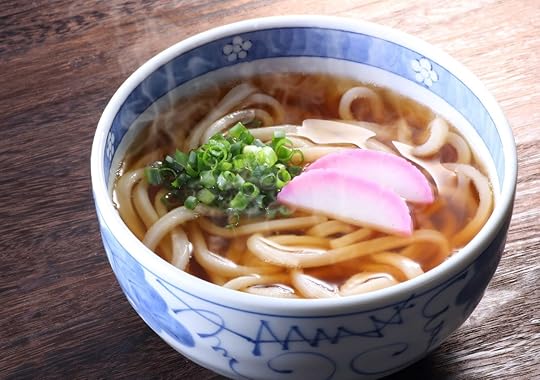
Photo: jazz3311/Shutterstock
“My favorite comfort food is my homemade miso udon. It’s from Japan where I was born. The main ingredients include miso paste, kombu, dashi, udon noodles, tofu, carrot, scallion, and mushroom. It’s a go-to for us when someone is feeling under the weather, but also when we want something delicious and nourishing.” — Christine Desadeleer, Executive Assistant
3. Pierogies — Russia
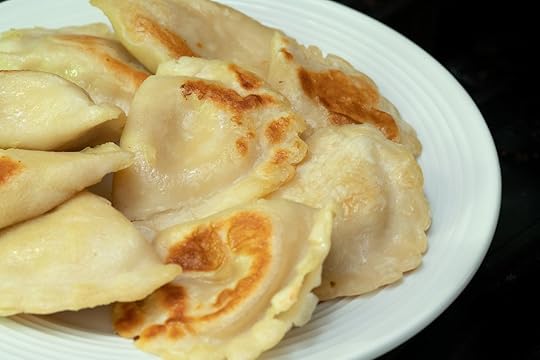
Photo: abd/Shutterstock
“I’m of Russian descent, so when I think of comfort food, pierogies are the first thing that comes to mind. A boiled flour dumpling stuffed with mashed potatoes, cottage cheese, sauerkraut, meat, spinach, and butter is the most satisfying treat! You can top it with melted butter, sour cream, and fried onions for extra flavor.” — Rob Chursinoff, Video Editor
4. Enchiladas verdes — Mexico

Photo: Marcos Castillo/Shutterstock
“My favorite comfort meal is enchiladas verdes. I grew up with dishes like this in San Antonio, and apart from being objectively the most delicious thing on the planet, they always taste like home to me. The main ingredients are tortillas, chicken, garlic, peppers, cilantro, and cheese, but it’s really the tomatillos that tie it all together.” — Hal Amen, Director of Ad Ops and Senior Editor
5. Pinaattiletut — Finland

Photo: Tanee/Shutterstock
“Our family’s favorite comfort dish is pinaattiletut, which means “spinach pancakes” in Finnish. But really it’s like a savory crepe, with the spinach mixed right into the batter. I learned this recipe from my Finnish mother-in-law, and it still reminds us of her. It’s super easy to make with common ingredients such as flour, eggs, frozen chopped spinach, and salt. You can eat it hot with melted butter!” — Noelle Salmi, Outdoor and Family Editor
6. French onion soup — France

Photo: Elena Shashkina/Shutterstock
“One of the most iconic dishes in French cuisine, the onion soup is the ultimate comfort food. It’s hearty, delicious, and the melted gruyère (or Daiya vegan cheese if that’s what you prefer) does wonders for the soul. Once laddled into a bow, you can either deposit a slice of bread on top of the soup, generously sprinkle it with cheese and broil the concoction for a crispy finish, or have a thick slice of bread on the side.” — Morgane Croissant, Culture Editor and Executive Producer
7. Gado gado — Indonesia

Photo: /Shutterstock
“My father spent many afternoons during my childhood bent over the stove preparing gado gado — Indonesian vegetable salad and peanut sauce. He’d slice up raw tofu and cucumber and drizzle the spicy, creamy peanut sauce on top. I’ve since re-created gado gado many times in my own kitchen, whipping together peanut butter with garlic, red chili peppers, and coconut milk in my blender. As far as snacks go, it’s a relatively healthy option, but sweet and savory are perfectly balanced in the rich peanut sauce. Make a jar and keep it in your fridge as a dip for vegetables.” — Elisabeth Sherman, Assistant Food and Drink Editor
8. Caribbean oatmeal — Haiti

Photo: RHJPhtotoandilustration/Shutterstock
“This dessert-like, comforting breakfast was a childhood favorite for me. I used to beg my mom to make it every weekend. You boil oatmeal normally, but then you add vanilla extract, evaporated milk, and brown sugar. Add cinnamon and make it as thick as you’d like. Then eat it with fruit and enjoy the way it makes your kitchen smell.” — Exenia Rocco, Social Media Producer
9. Chili verde — Mexico/Southwestern US

Photo: Fanfo/Shutterstock
“I love chili verde because it’s simple to make with basic pantry ingredients as long as you have access to roasted green chilies. In late summer you can find them being roasted over a fire in giant drums at farmer’s markets across the Southwest. I always buy a lot and freeze them for use all year long. It’s a spicy and intensely satisfying stew with a rich smoky flavor from the green chilies and can be made with pork or vegan. It’s also super versatile — eat it on its own, with a side of fresh flour tortillas for dipping, or smother it on a burrito or scrambled eggs.” — Brian Lewis, Senior Filmmaker
10. Mince and tatties — Scotland
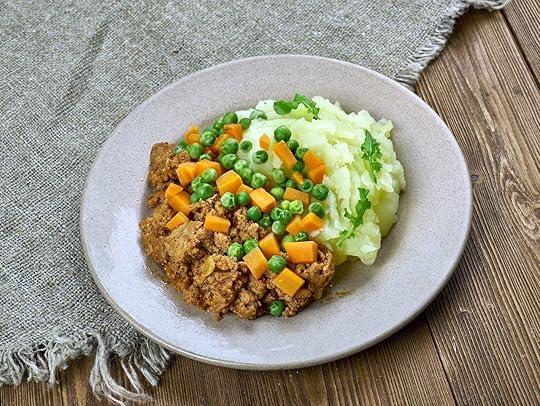
Photo: Fanfo/Shutterstock
“Mince and tatties is a Scottish comfort food staple. It may sound dull, as the dish is pretty basic in that it’s minced meat in gravy and mashed potatoes, but nothing beats it. Many Scots probably relate this dish with dreadful memories of bland school dinners, but for me, it is home on a plate. Similar to a ragu or bolognese, you can also get creative with your recipe. But for me, I like to keep it simple and traditional — why fix something that does not need to be fixed? Nothing beats it when you are in need of a little TLC.” — Katie Scott Aiton, Lifestyle Editor
11. Rouladen — Germany

Photo: stockcreations/Shutterstock
“My favourite German comfort food is rouladen. You start with thinly sliced beef, add mustard, bacon, pickle, and onion then roll it up. Sear the beef then braise it in the oven in a tomato-based red wine sauce. Serve with mashed potatoes or spaetzle, and let your plate ‘swim’ in the gravy for the ultimate comfort.” – Stefan Klopp, Director of Development and IT
12. Khachapuri — Georgia

Photo: Sergiy Palamarchuk/Shutterstock
“Khachapuri was love at first taste for me. Chewy and gooey, soft and salty: This classic Georgian cheese and egg bread reminds me of the best possible version of an impromptu cheese dish my mom used to throw together when we were kids. I tried making it at home for the first time while self-isolating, and I’m still not sure what was more comforting: kneading away stress while working the dough, waiting patiently for the bread boat to get golden, or tearing off that first corner to dip into the cheese pool in the center. I’ve never actually been to the Caucasus region, but I already know the first thing I’m doing if and when I touch down in Georgia.” — Alex Bresler, Copy Editor and Digital Producer
13. Chicken arroz caldo – Philippines

Photo: AS Food studio/Shutterstock
“When I was young my dad used to make chicken arroz caldo when I had a cold or flu. I think he supercharged the ginger because that’s what I remember the most about it, and it’s great when you’re sick. He didn’t make it with hardboiled eggs like many recipes do, but I kind of wished he did!” — Carlo Alcos, Senior Video Editor
14. Mac and cheese — United States

Photo: Fanfo/Shutterstock
“Growing up, my favorite comfort food was my mom’s mac and cheese. It has everything you could ask for: pasta, pepper, chili flakes, chives, and an extreme amount of cheese. I was (and still am) a fan of putting every type of the sharpest cheddar available in the mac, though now I appreciate something stinky in there as well. Mac and cheese is about as American of a comfort food as you can get (though homemade is always — always — better than the kind that comes in a box).” — Nickolaus Hines, Food and Drink Editor
15. Gyoza — Japan

Photo: Hikko.ne/Shutterstock
“My dad and stepmom live in Japan, and our fave comfort food over there is homemade gyozas. At-home gyoza is an activity as much as a delicious meal. To make gyoza at home, you can create any type of filling you want, stuff each wrapper and seal them individually like you would a pie, and then fry or bake the individual dumplings to serve.” — Ocea Jacobs, Trips and Experiences Manager
16. Crème brûlée — France

Photo: Tatiana Bralnina/Shutterstock
“Comfort for me is always tied to family and reassurance. For my favorite indulgence, though, it has to be crème brûlée. Growing up, my parents owned a restaurant that made the most perfectly crisp and vanilla version. That first bite where you break through the crust is the absolute best. I remember after studying abroad, the chef agreed to make some for my arrival home. Well, he only knew how to cook in batches, so I was left with 20 or so crème brûlées to work through (which I slowly did over a week and with help from others). For both, it’s the thoughtfulness of the preparedness that brings that warm feeling of comfort.” — Alyssa Derby, Director of Social Media
17. Beans on toast — England
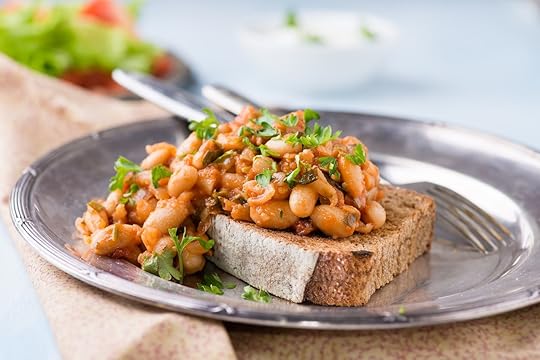
Photo: Katerina Belaya/Shutterstock
“Is there anything more comforting to a Brit than beans on toast? It’s such a warming and comforting dish — easy to make, and if you’re like me, you’ve always got a can of Heinz tomato beans in the cupboard. Meera Sodha (columnist for The Guardian) takes it to a whole other level with her vegan masala recipe, which adds a spicy kick to produce an even better version than the original.” — Alice Latham, Supervising Producer
18. Sunday sauce — United States (and Italy…kind of)

Photo: Courtesy of Laura Reilly
“I can’t say I’ve ever encountered a gigantic plate of spaghetti with meatballs, pork, and spicy sausage, loaded with parmesan cheese, in Italy. But it doesn’t get more New York/New Jersey Italian than a Sunday sauce (not gravy). The best part about our family’s sauce is that we use common canned tomatoes you can find at any store (though we are VERY particular about the brand), meat from any supermarket butcher, boxed Barilla pasta, and grated parm from the big ol’ green bottle. But it’s the seasonings that matter. You have to stir it every 10 minutes, all day, and the smell takes over the house. It certainly isn’t authentic to Italy, but it tastes like home, and it’s the best I’ve ever tasted in the tri-state.” — Laura Reilly, Director of Editorial
19. Fresh fruits and veggies — anywhere!
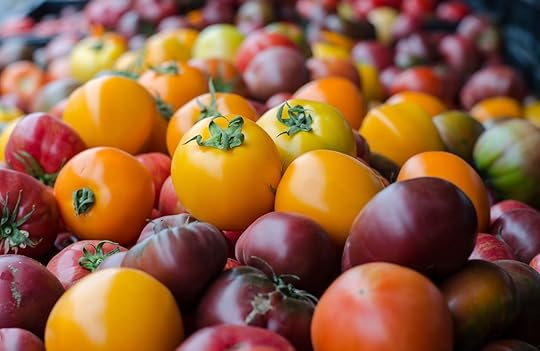
Photo: ChicEats/Shutterstock
“One of the many things our family loves about living in North Carolina is access to farm-fresh fruits and vegetables. My little family buys a majority of our produce at the farmer’s market in an effort to support our local farmers. We don’t take any greater comfort than eating a plate of fruits and veggies! Our favorite is definitely tomatoes with a little sea salt and balsamic glaze.” — Brooke Ptaszek, Supervising Producer 

More like this: 8 books that will take your taste buds on a global journey
The post The Matador team’s favorite comfort foods from around the world appeared first on Matador Network.

What is feng shui?

Feng shui is one of those terms that probably sounds familiar, like something Phoebe might have gotten into on an episode of Friends, but many of us would struggle to define. Feng Shui with Me founder and consultant Marianne Gordon likes to describe it as follows: “Feng shui is to the house what acupuncture is to the body.”
Like acupuncture, feng shui an ancient Chinese practice that can be traced back millennia. Both are regarded as methods of chi, or energy, healing. Both are included in the eight branches of traditional Chinese medicine. Yet only feng shui addresses the relationship between how we are and where we are.
The feng-shui philosophy centers around creating harmony at home to promote one’s overall well-being. With most of us spending much, if not all, of our time at home these days, it’s more important than ever to maintain a positive, productive, and organized living space, as well as develop healthy habits. Here’s how feng shui can help you feel better at home, according to the experts.
Decluttering before Marie Kondo made it cool

Photo: Kostikova Natalia/Shutterstock
The first step to creating a harmonious home is creating a house that invites harmony. Now is the time to clean, organize, and declutter, as Marie Kondo would say, whose own methods are heavily influenced by feng shui, according to Gordon. “You’re at home. You’re confined. And chances are, you’ve kept stuff on the backburner,” she says.
For Gordon, recent decluttering meant cleaning out her makeup drawer, which she realized after was 70 percent junk that could be tossed. Then it was her children’s toy stash. Decluttering may also mean clearing out your attic or tackling that stack of paperwork piling up on your desk.
Much as organizing fosters good feng shui, deep cleaning is part of the practice. Stoves and bathrooms should be immaculate, Gordon says, also noting that sweeping around the entrance to one’s home should be part of everyone’s daily routine. Chi regenerates every day, so the act translates to sweeping out the old and letting in new opportunities.
Keeping your stove spotless

Photo: Supavadee butradee/Shutterstock
The stove is a symbol of prosperity and abundance. It should be cleaned daily and, according to Karen Rauch Carter, a feng-shui consultant and author of the national bestseller Move Your Stuff, Change Your Life, should be kept in “tip-top condition.” Both Carter and Gordon also recommend placing a small mirror behind, or by, your stove, especially if you have a small kitchen. It’ll make a two-burner look like a four-burner and everything you’re cooking appears twice as plentiful. In lieu of a mirror, Carter points out that a shiny teapot could suffice.
Placing more mirrors wisely
“Mirrors are chi activators,” says Gordon. Accordingly, they should be placed in the rooms where we seek activation, be it professional, romantic, creative, healthful, or otherwise. Contemporary practitioners do not differentiate between things in themselves and reflections, adds Carter, explaining why mirrors are used so frequently in feng shui.
Beyond magnifying physical dimensions, and good fortune, mirrors are valued for their reflective properties. Placing a small round mirror on the side of your bathroom door facing outward, for example, can help repel chi away from the unlucky room. Alternately, you would not place a mirror across from your front door as the chi would be repelled back out of the house.
Creating separate spaces for separate activities

Photo: Photographee.eu/Shutterstock
Central to feng shui is the idea that different areas of the home should be dedicated to different activities. The bedroom is not a place to eat. The office is not the place to pursue hobbies. Working with the space you have, whether that means reappointing the rooms in your house or the corners of your studio apartment, create productive areas for all aspects of your life. Setting these spatial boundaries is more important now than ever to maintain a healthy routine.
If your home is built such that any part of it protrudes out past where your front is situated, make that area your office, Carter suggests. According to feng shui, these rooms are technically located in the front yard, so they’re more appropriate for an office or guest room than a bedroom. Gordon notes that designating clear work and play areas can be particularly helpful for parents, as different members of the family may require different surroundings to achieve different goals.
As for the bedroom, it’s crucial to create a sanctuary separate from work, hobbies, kids, etc. “The only things I say are supportive in the bedroom are things that support rest, relaxation, rejuvenation, and revitalization,” says Carter. “And passion,” she adds, as the bedroom is also a relationship-building space. As for those photos of your grandparents displayed on your nightstand, they’re probably better suited to the living room.
Minding your headboard
Where we orient ourselves in relation to doors and windows can impact our feelings of safety and security. Sitting with our backs to a door, for example, can make us feel vulnerable. “Think of the king, the pope, the priest, the judge. They always have a throne,” says Carter. “Why is that chair back so much taller than everybody else’s chair back? They’re claiming respect… So, if you want to be respected in the world, you’ve got to have your back covered.”
The same is true regarding where we sleep. The head of the bed is like the chair back in your office. Accordingly, our headboards should be backed by something solid, not sharing a wall with a window or a door. Carter also notes that because we spend roughly eight hours a day in our offices and eight hours a night in bed, it’s particularly important these spaces feel secure.
Making your home your own

Photo: Photographee.eu/Shutterstock
It sounds obvious, but many of us decorate our homes by default, not design. Where we live should reflect not only who we are but also who we want to be, says Carter, who’s witnessed significant personal progress among those who remade their homes to reflect their goals. Imagine someone who “inherited junk from great-grandma, who never visited the house but became the interior designer by default,” she says. That person would be better off outfitting their house to support their “dream future of a healthy, vibrant, happy person.”
Trade in your hand-me-down furniture for decor that reflects your taste. Repurpose the furniture you have to be more your style, and exercise those decluttering skills for the pieces that don’t. If you want to get in shape, create a dedicated space for athletic equipment. If you seek professional success, create a commanding office space. If you’re looking to hone your creativity, surround yourself with inspirational artwork.
Bringing the outside in

Photo: Amilao/Shutterstock
If you are going to hang artwork, Carter recommends nature photography. If possible, avoid works with single subjects, like a lone flower, as they can bolster feelings of isolation. It can be something as simple as ordering a $1.99 calendar, she says, which “gives you 12 beautiful photographs that you can put in your sphere of influence…where you’re spending a lot of time.” Also worth surrounding yourself with is the Flower of Life, a circular, geometric symbol that “spans all religions, across time,” according to Carter. Print one out and slip it under your bed.
Gordon suggests stimulating a different sense by playing nature sounds. She also recommends hanging nature imagery, or opting to binge Planet Earth over some Netflix drama. For a more hands-on approach, Gordon cites gardening as an easy way to increase your connection to nature while you’re stuck indoors. Even if your access to the outdoors is limited, you can still germinate seeds. “You can have a lentil that you turn into a plant, an avocado seed,” she says. Or, she notes, you may be able to order some seeds online.
Mirrors can play a role here, too. Those in urban areas can place mirrors across from their windows. This will double your exposure to the outdoors from inside and make your room feel lighter and airier, promoting the sense of peace only nature can.
Setting up an altar in the center of your home

Photo: FotoHelin/Shutterstock
Altars are common in feng shui. And they’re easy to set up with materials you may have on hand. To make an altar, choose a space that’s low to the ground and decorate with fine fabric, crystals, incense, or anything else that will help you “journey, reflect, meditate, and pray,” as Gordon says. Put it in the center of your house, an area associated with health and also one that disperses energy to other areas. “If you have peace in the center and you’re grounded,” Gordon says, “all the areas of your life are going to be peaceful and grounded as well.”
Ridding your house of negative energy
One way to remove negative energy is to make a saltwater cure. The method is simple: Fill a glass jar about two-thirds of the way full with salt, preferably coarse; place six coins in the jar but nothing valuable as the cure will be thrown out at the end of the year, or self-isolation period; then fill up the top with water. The cure should then be stored in the south or east of the home in accordance with the ancient feng-shui principle of flying stars, says Gordon.
She also suggests burning sage, or smudging, to ward off negativity. You can order bundles on Amazon or create your own from loose leaves you may have in the kitchen. Note that loose leaves burn much faster and should be used with a fireproof pot, plate, baking dish, etc.
Writing and reciting affirmations
When smudging, you can also say affirmations, or positive declarations, inspired by the areas of your life you’d like to improve. Each individual may create their own affirmations, ideally at the beginning of the year, and should write them in the present tense in order to better manifest them. As an example, Gordon recites, “Remove all stress and negative energies from my relationship” and “Invite positive energy in my life.”
Taking time to meditate

Photo: soul_studio/Shutterstock
While not strictly a feng-shui practice, both Carter and Gordon recommend incorporating meditation into your routine. “Close your eyes as if you’re looking at your forehead…put the tip of your tongue to your mouth, and just breathe,” says Carter, who also recommends practicing holding your breath as it’s difficult to think about anything else while doing so. “There’s a time to be outward, and now we’re in our homes, it’s a time for a moment of inwardness,” she adds.
Gordon also notes that meditation can help in challenging living situations, whether you live alone and are experiencing the effects of self-isolation twice as hard or you’re holed up in a tense roommate situation. It’s an answer to both predicaments, she says. “You’re either having to create your own bubble to distance yourself, and meditation is a look within…or if you’re alone and you’re scared… you have to make peace with the fact that you’re alone in confinement, and meditation is a wonderful tool.”
Unplugging before bed
One of the simplest, most effective ways to create a positive atmosphere is to turn off your tech while you sleep. For Gordon, this means “all screens after 9:00 PM are a big no-no,” Wi-Fi gets disconnected completely after 10:00 PM, and “we don’t turn it on again until 8:00 AM.”
Carter takes it a step further. All electronic devices and even chords should be two to three feet away from your bed at minimum, she says. She also notes that you may not be in the clear if there’s something disruptive on the other side of the wall. “What if there’s a route…or the circuit panel of your house, or the whole fuse box. You literally have to do a walkabout and see what you’re being exposed to…what’s in your bedroom that would be disturbing you.” 

More like this: 5 ways the world tackles spring cleaning
The post How feng shui can make you feel cozier at home, according to experts appeared first on Matador Network.

State parks as COVID quarantine

State parks are stepping up to serve a useful purpose amid the coronavirus outbreak. On March 9, Georgia Governor Brian Kemp announced that one acre of Hard Labor Creek State Park would function as a place for isolating and monitoring coronavirus patients. Similarly, three Louisiana parks have been designated as quarantine zones where patients are brought to allow them to recover from the virus, away from more vulnerable members of society.
As of Wednesday, March 18, 2020, two of Louisiana’s three quarantine parks were empty, but at Bayou Segnette State Park, around 10 patients were currently staying in cabins floating on the wetlands. There are 16 cabins and 98 RV sites in total, all of which were evacuated on March 14 after the decision was made to use the area as a quarantine zone. Bayou Segnette is intended to be used by those awaiting their coronavirus test results, and who cannot be sent home due to concerns about infecting people at risk. If test results are negative, they will be sent home; if positive, they will be held until cleared by a medical professional.
Joey Camp, a Waffle House cook and National Guard veteran, was the first patient to take up residence in Georgia’s Hard Labor Creek State Park. After testing positive for the virus and a four-day hospital stint, he was relocated to an RV trailer in the park for seven days until his symptoms cleared.
“It was just like an extended camping trip,” Camp told Outside.
Once Camp was sent home, another patient took his spot. There are currently seven RVs in Hard Labor Creek State Park to accommodate patients. 

More like this: The best uncrowded state parks near the five busiest national parks
The post Some state parks are being turned into quarantine zones for COVID-19 patients appeared first on Matador Network.

How to preserve, pickle, dry food
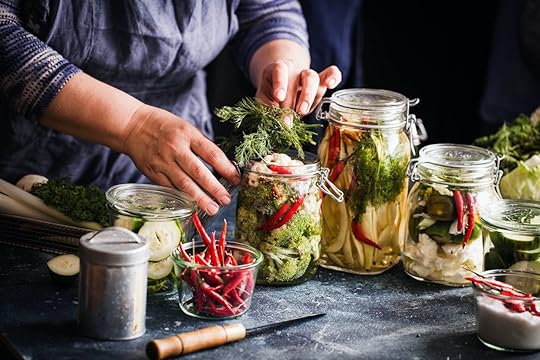
You’ve already alphabetized your books, decluttered your closet, and your house has never been cleaner. You’d love to spend some quality time in your kitchen (and with all that bulk food you probably just bought at the grocery store), but daily bouts of baking coupled with a lack of space for a decent workout will likely leave you feeling lethargic and wishing you’d stayed away from the stove. Now is the time to learn a new culinary skill. Here, we look at preserving, pickling, and drying, three ways to keep you in the kitchen — and make your food last longer.
Preserving

Photo: Alp Aksoy/Shutterstock
What:
Broadly speaking, when it comes to preserving, you’re generally dealing with fruit. There are three common types: jam, jelly, and preserves. Jam involves mashed up fruit, jelly just uses the juice, and preserves attempt to keep the fruit whole, or at least in larger chunks. Jelly requires pectin — something you probably don’t have in the pantry, but most people will be able to produce jam and preserves without taking a trip to the store.
Why:
Who doesn’t love jam on toast as a comfort food? And preserved figs, apples, pears, or ginger all work well to liven up a platter of crackers and cheese. Jams can also be used in pies, cakes, and cookies, if you’ve simultaneously decided to teach yourself to bake. It’s also a great way to use up fruit that is just a touch too ripe to enjoy raw.
How:
This recipe for strawberry jam is a great place to start. It requires a fairly simple process of slow-cooking the fruit until the moisture content reduces — it takes less than an hour. Refrigerator jams don’t require stringent jar sterilization and can keep for about a month in the refrigerator or for three months in the freezer.
What do I need?
About four cups of ripe fruit, but not overripe or rotten. A pan large enough to simmer the fruit. Three cups of sugar, a little lemon juice, and enough clean jars to store the jam or preserve. Optional: spices, chilli, and/or alcohol (to use in the jam, not to drink if your first batch goes wrong).
Pickling
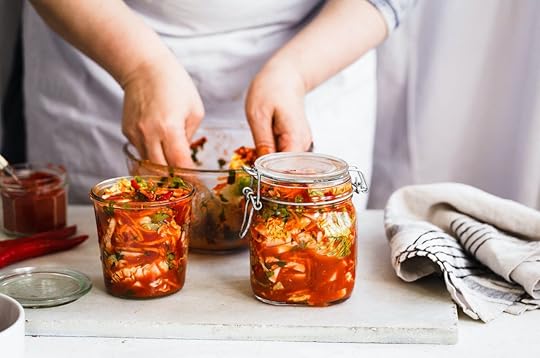
Photo: casanisa/Shutterstock
What:
Pickling, a preservation technique most commonly applied to all sorts of vegetables, not just cucumbers, lengthens the shelf life of perishable foods through fermentation. Cabbage (as in Korean kimchi), carrots, tomatoes, cauliflower, and peppers — as well as eggs and even fish, like herring — can all be pickled either in a brine or through submersion in vinegar.
Why:
Crisp, zingy pickles can really brighten up a dish, whether it’s a salad, gourmet hot dog, rich curry, or just your lockdown lunchtime sandwich. It’s also a great way to ensure you’ll still have vegetables in your pantry in the weeks to come.
How:
Fermented pickles are more difficult to master and require a tricky canning process in order to be safely stored for several months. But “quick pickles,” also known as “refrigerator pickles,” can easily be made in less than half an hour using ingredients and equipment that almost every home cook will have at hand. Allow them to sit for a day or two before cracking open the jar. Quick pickles will keep for about a month if stored cold.
What do I need?
Pretty much any vegetable can be pickled, although vegetables with sturdier skins tend to work better. Cucumber and onion are the classics, but don’t forget ginger, carrots, peppers — even something more delicate like a tomato can be pickled if kept whole. You’ll also need vinegar (almost every type will work, save for balsamic), water, sugar, salt, a saucepan, and some sterilized jars. Experiment with the herbs and spices you already have in your cabinets to liven up your brine, including coriander seed, turmeric, chilies, garlic, oregano, thyme, and the classic, dill.
Drying
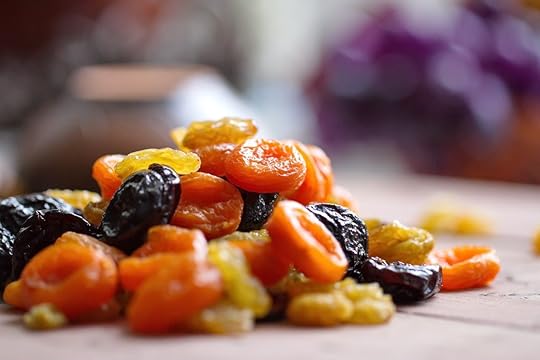
Photo: Gamzova Olga/Shutterstock
What:
This method of preservation involves dehydrating food. Removing all the moisture from your ingredient of choice, whether that’s slices of mango or strips of cod, inhibits the growth of bacteria, meaning the food won’t rot if it’s stored over a long period of time. Drying was especially popular before the advent of refrigeration. Sun drying and smoking were once common methods of drying food but it can also be done in a food dehydrator or an oven.
Why:
One of the main reasons you might want to master drying of foodstuffs is for the satisfaction of learning this tricky skill. It is definitely the most difficult method of the three and also the one that takes the most time — something you might have plenty of. But it will also guarantee a store of food you might need to have on hand if you’re required to stay inside for a long period of time.
How:
There are three main ways to dry food — in the sun, in a dehydrator, or in the oven. Assuming most people don’t have a food dehydrator on hand and many don’t have the right weather to try the classic sun-drying method, you’re likely going to be using your oven for the process. All sorts of foodstuffs can be dried: meat, herbs, vegetables, and fruit (like these oven-dried apple slices) — the latter are best blanched first to maintain their color and flavor.
What do I need?
In the absence of hot, sunny days or the aforementioned dehydrator, you need an oven that can be set at a very low heat. If your oven can’t be set as low as 140 degrees (or on a “keep warm” setting) then it’s going to cook rather than dry. Air flow is important in the drying process, so it’s best to help out the oven with an electric fan — prop the door open and set up the fan to do its work. The other things you’ll need are time and plenty of money for the electricity bill: It takes around eight hours to dry food in the oven.
Want to learn more?
Like most hobbies, pickling, preserving, and drying can be as easy or as involved as you’d like. Tomes have been written on the ancient arts of preserving foodstuffs, dispensing tips, tricks, and, of course, recipes for making the perfect jams, chutneys, preserves, and pickles. Here are a few to seek if you’d like to learn more:
Jam Session: A Fruit-Preserving Handbook — Chef Joyce Goldstein shares 75 recipes for her favorite jams, jellies, chutneys, and compotes.
WECK Small-Batch Preserving: Year-Round Recipes for Canning, Fermenting, Pickling, and More — There are 100 inventive recipes in this beautifully illustrated book, which covers jams, kimchi, sauerkraut, and other pickles and preserves.
Jams, Preserves and Chutneys Handbook — Before launching into some delectable recipes, culinary legend Marguerite Patten offers all manner of techniques and troubleshooting tips for sweet and savory preserves.
Food Drying with an Attitude: A Fun and Fabulous Guide to Creating Snacks, Meals, and Crafts — Resources for food drying are scarce, but this 160-page guide covers everything from how to safely dry and dehydrate food, to nutritional information, and, of course, plenty of recipes. 

More like this: 8 books that will take your taste buds on a global journey
The post How to preserve, pickle, and dry foods in your new free time appeared first on Matador Network.

Olympics Games to be postponed 2021

Amid mounting pressure for the 2020 Olympics to be postponed, and countries like Australia and Canada even withdrawing their athletes a few days ago, Japanese Prime Minister Shinzo Abe and Thomas Bach, the president of the International Olympic Committee (IOC), have agreed to postpone the Games to 2021.
The Games, originally slated to take place from July 24 to August 9, 2020, will now be delayed a whole year, and will stay in Japan.
According to a joint statement from the IOC and the Tokyo 2020 Organizing Committee, “The IOC President and the Prime Minister of Japan have concluded that the Games of the XXXII Olympiad in Tokyo must be rescheduled to a date beyond 2020 but not later than summer 2021, to safeguard the health of the athletes, everybody involved in the Olympic Games and the international community.”
The Paralympic Games will similarly be postponed to next summer, from late August to early September.
In the meantime, the Olympic flame will stay in Japan. And despite the postponement, the Games will keep the name Olympic and Paralympic Games Tokyo 2020. 
A version of this article was previously published on March 23, 2020, and was updated on March 24, 2020, with more information.

More like this: How to stay in shape at home when the gym is closed
The post The 2020 Tokyo Olympics are officially postponed to 2021 appeared first on Matador Network.

March 23, 2020
Great American Takeout Tuesdays
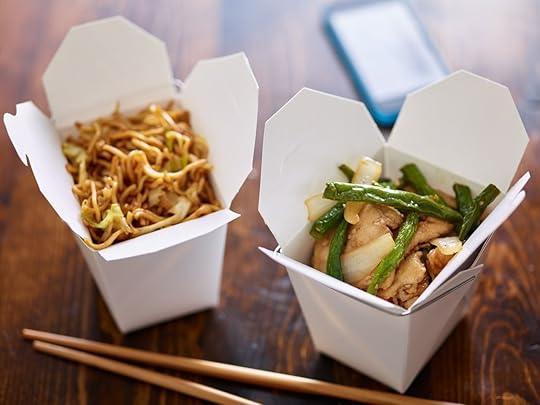
Though everyone in America is feeling the strain of the COVID-19 crisis, few industries have been negatively impacted on the same scale as the restaurant industry. Just a few weeks ago, our nation was experiencing a renaissance of fresh food and local chefs, but now nearly all have seen their dining rooms shut down in the past couple of weeks. And though some have been able to stay open for takeout and delivery, thousands of servers, bartenders, and other staff have already lost their jobs.
While there are ways you can donate and help those immediately affected, this Tuesday, March 24, the restaurant industry is asking you to do the easiest thing possible: eat.
A coalition of restaurants including Panera Bread, El Torito, Noodles & Co., and others are promoting the Great American Takeout to encourage everyone in America to order at least one delivery or pick-up meal to help the struggling foodservice industry.
“This is no longer about the survival of individual restaurants,” says Russ Bendel, CEO of The Habit Burger Grill, one of the participating restaurants. “It’s about the future of our industry. And time has run out.”
Though the idea is nothing groundbreaking, it is, at the very least, trying to give a little spike to restaurants that may be days from full closure. The group is asking people to post on social media in advance of the event to drum up excitement, using the hashtag #greatamericantakeout, then encourage their friends and online acquaintances to do the same before finally ordering and posting pictures with the same hashtag.
Of course, the idea isn’t that people stop at one meal, and hopefully, this can turn into a Tuesday tradition. So, if you’ve got the means, take the night off cooking and help support your local restaurants. While it might not be the same as going out to dinner once was, at least it’ll help ensure your favorite spots are still there when all this is over. 

More like this: How you can help hospitality workers affected by COVID-19
The post Support your favorite restaurants on Tuesday during the Great American Takeout appeared first on Matador Network.

Museums release coloring books

If you’re feeling restless during the coronavirus lockdown, there’s one fun way to keep you busy that does not require any particular craft skills: coloring. Hundreds of libraries and museums have released coloring books based on their popular book collections, available for free download.
Since 2016 the New York Academy of Medicine invited libraries, cultural institutions, and archives to offer printable PDF pages based on their collections, and given the current circumstances, over 100 new organizations have joined the campaign. The New York Botanical Garden, the Smithsonian, and the University of Oxford are just some of the notable institutions that have joined the project and contributed materials.

Photo: New York Botanical Garden

Photo: Wangensteen Historical Library
To check out some pages from these coloring books, monitor the #ColorOurCollections hashtag on Twitter. 

More like this: How to find remote green spaces near you to get out of the house
The post Hundreds of libraries and museums have released downloadable coloring books appeared first on Matador Network.

Matador Network's Blog
- Matador Network's profile
- 6 followers



